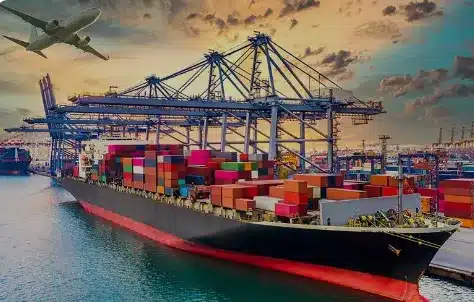Modernizing India’s Logistics: The Impact of Make in India and NLP
Strengthening Logistics with Make in India and NLP

India’s logistics industry, one of the largest globally, connects various sectors by providing supply chain, warehousing, and transportation solutions from suppliers to customers. This industry is crucial to India’s economic growth, supporting the free flow of products and services domestically and internationally. As India aims to achieve a GDP of US$ 5.5 trillion by 2027, modernizing the logistics industry becomes increasingly important.
Role of Make in India in Logistics
Launched in September 2014, the Make in India program supports over 20 sectors, including the shipping and port industry. It facilitates the integration of infrastructure and industry, promoting social and economic growth. The program has streamlined customs operations with the Indian Customs Single Window and PCS1x, enabling electronic clearing processes for importers and exporters, and fostering ease of doing business.
Financial assistance is provided to Indian shipyards under the Shipbuilding Financial Assistance Policy (SBFAP) to secure international orders and boost competitiveness. Over the last four years, 31 shipyards have received 88 vessel orders totaling Rs. 6800 crore.
Infrastructural developments, such as trans-shipment hubs, logistics parks, and national industrial corridors, along with modern ports and port-based SEZs, provide a strategic advantage to the industry. These efforts align with PM GatiShakti – National Master Plan, enhancing systematic, multi-modal connectivity across economic zones to ensure smooth movement of people, goods, and services.
MSC’s 2023 Sustainability Report: Navigating Transition and Achieving Milestones
National Logistics Policy: Enhancing Operational Efficiency
To complement PM GatiShakti’s National Master Plan (NMP), the National Logistics Policy (NLP) was introduced in September 2022 to enhance both physical infrastructure and operational efficiency. Key initiatives under NLP include:
- Advanced Technology: Launching the Unified Logistics Interface Platform (ULIP), integrating 34 logistics systems, providing a unified sign-on for traders, and incorporating GST data seamlessly.
- Infrastructure Development: Integrating national infrastructure through the Gati Shakti Programme and optimizing coastlines and waterways in collaboration with Sagarmala for improved connectivity.
- Reforms and Regulation: Supporting a unified regulatory framework for multi-modal logistics parks (MMLPs), enhancing first and last-mile connectivity, and boosting logistics for export-import and related industries.
